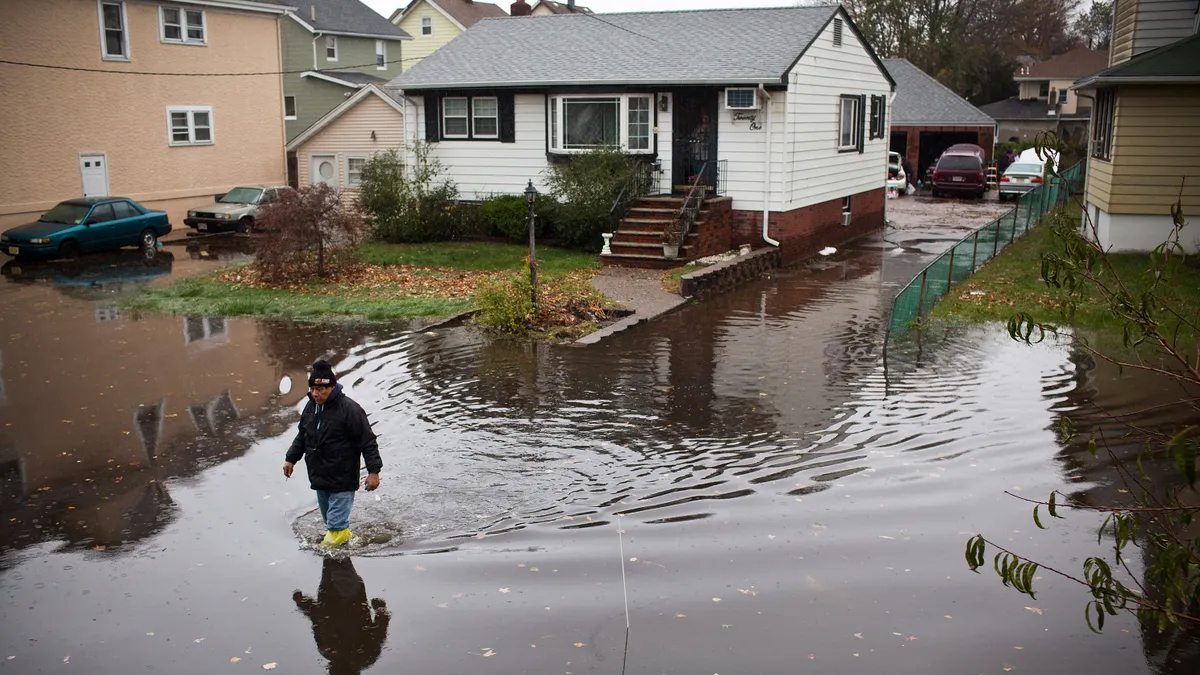Dive Brief:
- The U.S. Department of Housing and Urban Development strengthened flood-protection requirements for homes using federal funds for construction or substantial repair via a recently finalized regulation.
- HUD issued a final rule last week that expands the areas where homes must be elevated or floodproofed through a new standard that accounts for future flood risk. The rule also increases elevation requirements for certain new construction.
- Despite real estate industry concerns that the rule will spike construction costs, HUD says it will save U.S. communities millions of dollars by reducing flood insurance premiums, building damage, relocation costs and loss of income during floods.
Dive Insight:
Flooding costs taxpayers billions of dollars each year, with one inch of water costing an estimated $10,000 to $27,000 per home, HUD says. Elevating structures more than pays for itself when floods arrive, the agency contended in a news release, citing a National Institute of Building Sciences report finding that every $1 invested in elevation provides a benefit of $6 in avoided damage.
The new rule revises HUD’s regulations to implement the Federal Flood Risk Management Standard, a strengthened flood risk-reduction standard established in 2015 following the devastating impacts of Hurricane Sandy. Rather than using the 100-year floodplain, the agency will now base elevation and floodproofing requirements on the floodplains determined by this forward-looking standard.
The rule encourages — but doesn’t require — the use of the “climate informed science approach” to determine such floodplains. This approach leverages the best-available data to account for how climate change impacts like sea-level rise and rainfall will influence the scope and depth of flooding.
It’s the “best possible standard that HUD could have issued,” Union of Concerned Scientists’ Climate Resilience Policy Analyst Shana Udvardy said in a statement, noting that the federal government has been relying on a standard based on past climate conditions for decades. “We hope this rule will be a model for federal agencies across the board,” she said.
The rule also updates the standards for low-rent public housing programs and one- to four-unit housing insured by HUD’s Federal Housing Administration, requiring such projects’ lowest floor to be constructed at least two feet above the 100-year floodplain. Previously, they were required to be built at the level of the 100-year floodplain.
With millions of homeowners nationwide using FHA mortgage insurance, states, counties and municipalities may ramp up their elevation standards to match HUD’s, the Association of State Floodplain Managers’ executive director, Chad Berginnis, told E&E News.
The stricter standards disappointed Bob Broeksmit, president and CEO of the real estate finance industry group Mortgage Bankers Association. He argued in a statement that the move will curtail housing construction by making it more costly to qualify for FHA financing.
But HUD said on an FAQ web page that while the rule could increase upfront construction costs, the costs of elevating new construction are marginal compared with the total construction price tag. The agency added that since elevation is already required in dozens of states and hundreds of localities, the rule will have a limited financial impact across much of the country.
Compliance with the rule is required by June 24, although HUD set a delayed compliance date of Jan. 1, 2025, for certain projects and programs that may need more time to prepare. HUD plans to hold webinars on the final rule in May and June.











